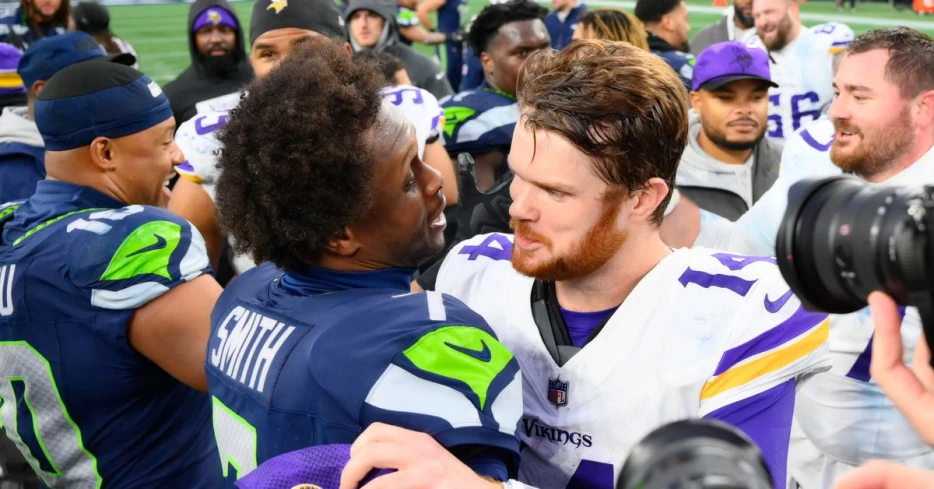
 Field Gulls
Field Gulls
The pandemic resulted in NFL teams bumping up against the cap for years, but teams are now flush with cap space, creating a whole new set of problems.
Over the course of the offseason there’s been no shortage of debate regarding whether the Seattle Seahawks opted to head down the correct path at the quarterback position, trading Geno Smith to the Las Vegas Raiders and signing free agent Sam Darnold. Whether one prefers Sam Darnold for $105M or Geno Smith for $106M over the next three seasons, the bigger issue at play is not who will be under center for Seattle in 2025, but how the rapidly rising salary cap has thrown a wrench in salary equity across the league.
After years of teams continually operating right up against the salary cap due to the knock on effects of the pandemic-driven revenue shortfall from the 2020 season, teams across the league are flush with cap space. According to the NFLPA public salary cap report, nearly two thirds of NFL teams have more than $20M in cap space available for the 2025 season, with 11 teams sitting on more than $30M of available cap space.
And, that cap space didn’t get created by teams going cheap in free agency, as the average of the top free 75 agent contracts was up more than 21% over the average of the top 75 free agent contracts signed in 2024.
Salary growth should come as no surprise, as the 2025 cap of $279.2M is 9.32% higher than the 2024 cap of $255.4M. However, the jump in top end salaries isn’t simply because the cap increased, it’s because the cap increased at a higher percentage than minimum salaries.
NFL minimum salaries are determined by how many credited seasons a player has earned during their career, and the 2020 CBA gives players in each category a $45,000 raise in each new league year. That amount, $45,000, is certainly not a small amount, but as a percentage is comes in far lower than the 9.32% that the cap overall increased.
At the low end, a rookie with no NFL experience has a minimum salary of $840,000, a 5.67% increase over the $795,000 minimum from 2024. On the other end of the spectrum, a veteran with seven or more years of experience saw their minimum salary increase from $1,210,000 to $1,255,000, or 3.58%. It doesn’t take rocket surgeon to figure out that 5.67% and 3.58% are both less than 9.32%, and that’s where the rookie wage scale is driving up top end salaries.
Specifically, as noted here on Field Gulls earlier in the offseason, the overwhelming majority of the roster for any given team is made up of players on rookie contracts, or at least subject to the constraints of the rookie wage scale. This is because until a player has four accrued seasons and qualifies for free agency, their earnings are effectively capped by the rookie wage scale and the CBA.
In turn, the cap space that...